
Hope for a huge, ancient and imperilled fish
First Nations are leading efforts to make sure lake sturgeon can find a home in...
A seven-month moratorium on approvals of all Alberta renewable energy projects is ending, with new rules that could bar development across massive areas of the province.
Even with the changes announced on Wednesday, questions remain about what comes next and what the long-term impacts of the pause and the regulations will be.
Without advance notice and with little to no consultation, the United Conservative Party government announced the moratorium on Aug. 3, 2023, slamming the brakes on an industry that was booming in the province’s open electricity market.
Billions of dollars in investment had poured into Alberta, with no government intervention, and helped fuel a surge in solar and wind projects.
In tandem with the moratorium, the government tasked the Alberta Utilities Commission — the regulator of the grid in the province — with conducting an inquiry into new rules or regulations for Alberta renewable energy projects while the pause was in place. The final results of that inquiry are due March 29.
In a letter dated Feb. 28, sent from Affordability and Utilities Minister Nathan Neudorf to the commission, Neudorf said the government appreciated the initial report findings and supported inclusion of municipalities in the regulatory process, as well as changes to existing rules around impacts on agricultural land, reclamation security and viewscapes.
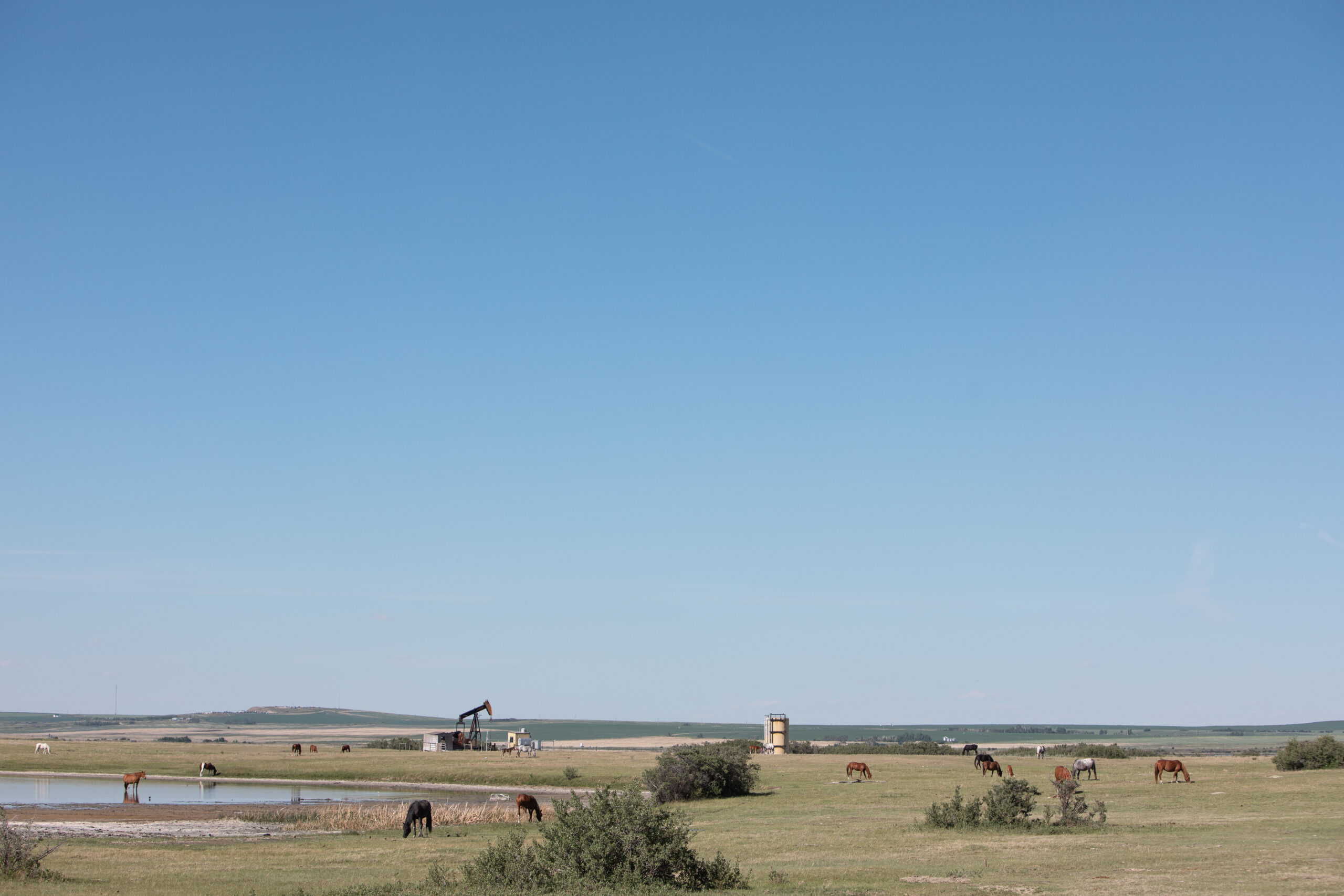
He then said the government plans to establish 35-kilometre buffer zones around protected areas and other “pristine viewscapes” that will prevent wind farms from being developed, which could impact the majority of land in Alberta. Other renewable projects within those buffers could be subject to “visual impact assessments.”
Speaking to the media on Wednesday he said there is no universal definition of what constitutes a pristine viewscape, but generally refers to “areas that are unobstructed, natural landscapes.”
Neudorf also said the government would take an “agricultural first” approach and ban all renewable projects on Class 1 and Class 2 agricultural land — meaning those with the best irrigation — unless a proponent can prove agriculture and renewables can co-exist on a property.
There could be new rules about impacts on neighbours, new transmission charges for renewable producers and reclamation security paid to the government.
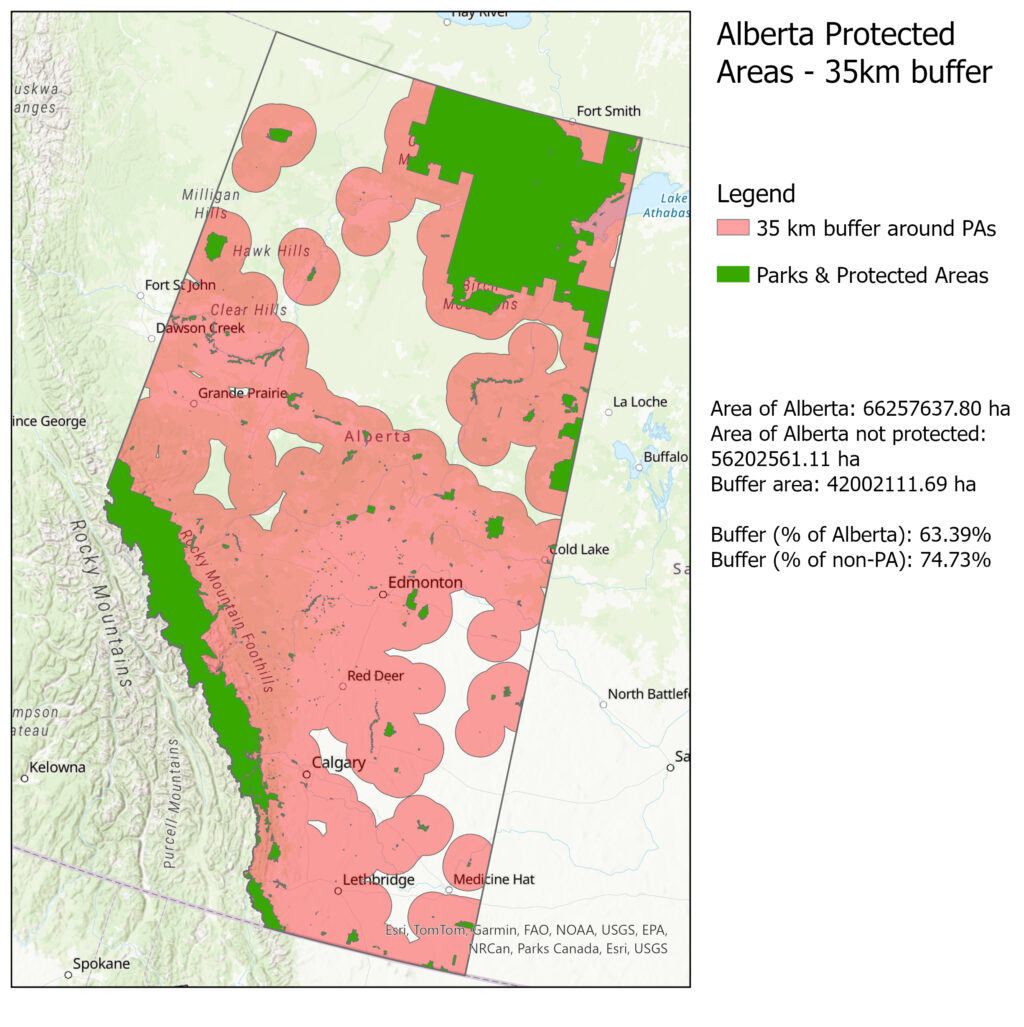
Speaking prior to the government announcement, Jorden Dye, the executive director of Business Renewables Centre-Canada, which helps corporations sign renewable energy contracts with power generators, said it’s too early to know what the impacts of the pause will be, but there is a considerable amount of uncertainty in the sector.
“I think we will start to see the major impacts once we get the rules announced, although I like to highlight that regulatory approval for renewable projects took on average six months in the time before the moratorium,” he said. “So at a minimum, the moratorium itself doubled the time for the regulatory portion of all these projects.”
Here’s what we know — and don’t know — about the plan, the impacts of the moratorium and what comes next.
Dye, in a statement sent in response to Wednesday’s announcement, said the uncertainty continues.
“While details are needed across all categories, particularly concerning is the continued vagueness of the viewscapes requirements,” he said in an emailed statement.
“Taken at face value, an unprecedented 35-kilometre buffer zone around all protected areas would eliminate 76 per cent of southern Alberta and would create a backdoor land ban. Any project that’s even close to a protected area, or what might be considered a protected area, can’t move forward until there’s certainty from the provincial government.”
Dye called the new rules a second “soft moratorium,” due to the uncertainty and extent of the changes.
The new rules will apply to all projects approved after March 1. There are currently 26 projects working towards regulatory approval, according to Neudorf.
When asked on Wednesday whether the buffer zones would be a de-facto ban on wind farms throughout most of southern Alberta, Neudorf dodged the question.
“I think the province is much wider than 35 kilometres,” he said. “We go all the way to Saskatchewan. I think there’s many locations there.”
An October 2023 report from the School of Public Policy at the University of Calgary suggested only 0.08 per cent of all farmland would be required to build solar capacity to the level the Alberta Electricity System Operator said is needed to achieve net-zero emissions with a strong focus on renewables.
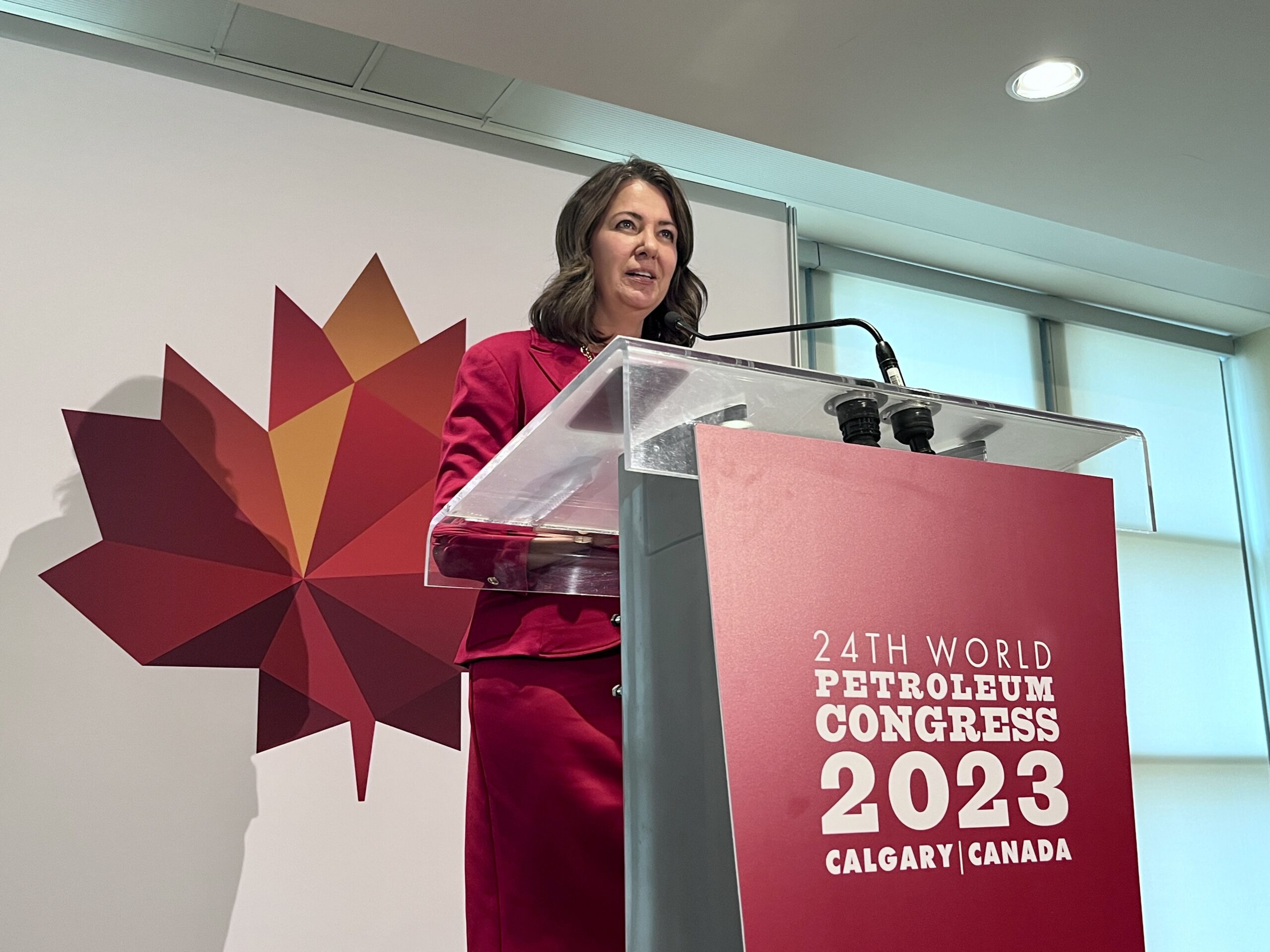
If only irrigated land was used for all solar installations, it would require three per cent of all irrigated land in Alberta, according to the study.
The report notes the calculations used are conservative and do not factor in solar built on unused land or buildings, continued improvements in solar panel efficiency or new techniques that allow agriculture and solar to co-exist.
Many of the issues highlighted by the government as critical are already part of the considerations when a project goes before the commission, including impacts on land. But the new rules on Wednesday go further in terms of viewscapes and mandatory security deposits.
In addition, agreements for renewable developments are made between a landowner and the company looking to build the installation — and landowners can reject a project, unlike oil and gas developments in Alberta.
Initially, the government said it was responding to concerns raised by the regulator, landowners and municipalities, as well as the Alberta Electricity System Operator, which oversees the operation of the grid.
Specifically, it pointed to letters from the system operator, which thanked the government for informing it of the inquiry, and the Alberta Utilities Commission (the regulator), which said a period of engagement with stakeholders would help improve regulatory clarity. Neither letter asked the government to introduce the moratorium, despite claims to the contrary from Alberta Premier Danielle Smith.
The Narwhal previously reported on documents showing the government was already talking to the regulator about instituting the pause just one month after the provincial election last spring and a month before the letters in question were drafted.
It’s unclear why the government decided to implement the pause. Documents obtained by The Narwhal through freedom of information requests were heavily redacted and only showed the government was holding meetings with officials far sooner than previously admitted.
Details of those meetings or how they were initiated were not clear. The government has previously declined any requests for additional information.
The Alberta Utilities Commission submitted its first report on Jan. 31, which looked at land impacts, viewscapes, possible mandatory reclamation security deposits and considerations of allowing renewable projects on Crown land.
The changes reported on Wednesday are tied to those issues.
But the commission has until the end of March to submit its final report that considers “the impact the increasing growth of renewables has to both generation supply mix and electricity system reliability.”
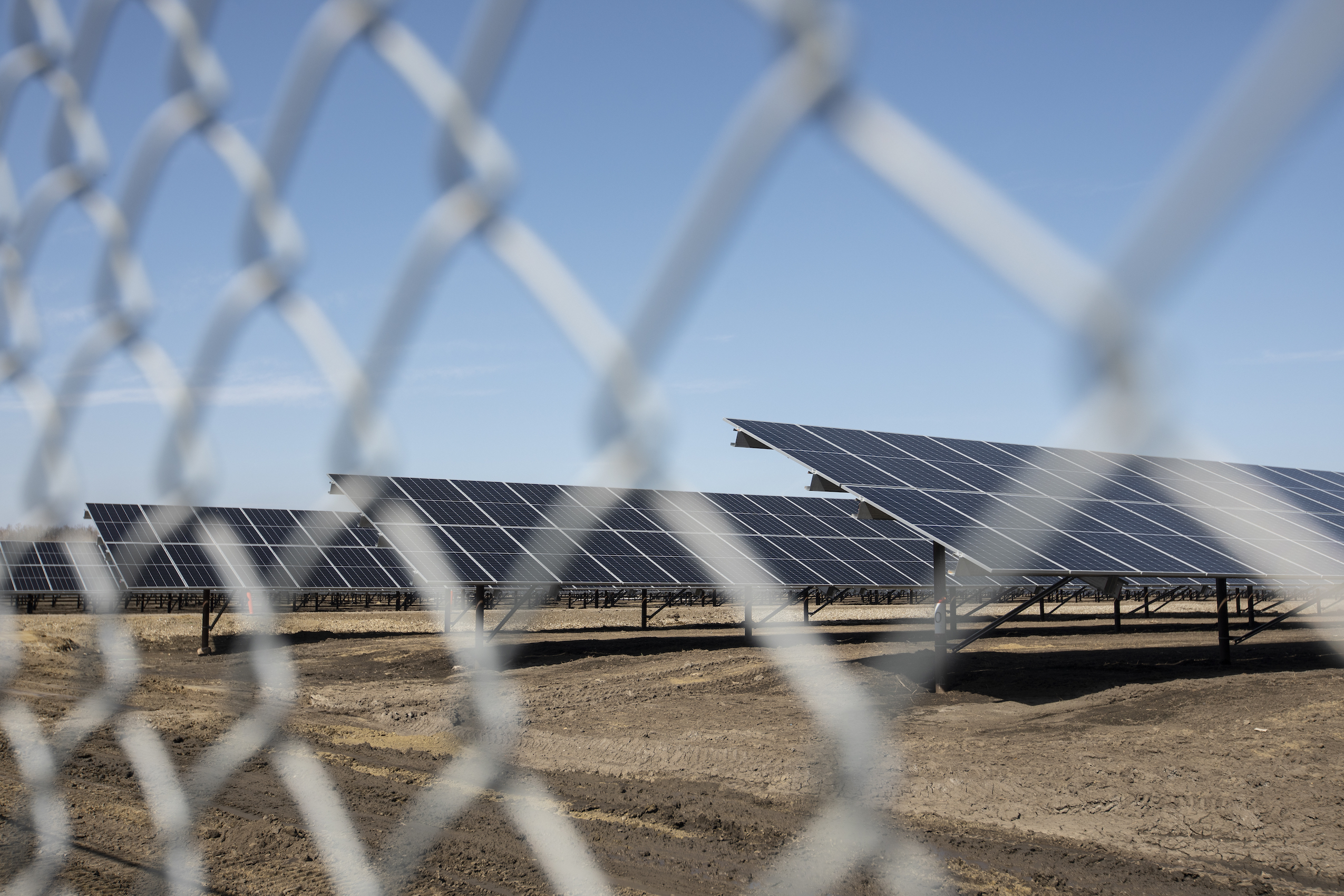
That leaves a gap of one month between lifting the pause and submission of the final report to the government, which then must consider the findings.
Ashley Stevenson, the press secretary for Minister Neudorf, sent The Narwhal a statement from the minister prior to Wednesday’s announcement. She said the government supports renewables and hopes there is more clarity about regulations in the future, but did not respond to questions about what will happen when the pause lifts or whether the government would make the commission reports public.
Neudorf previously told The Globe and Mail it could take years to implement new regulations and legislation.
The sector was booming in Alberta, bringing in billions of dollars in investment and helping to reduce emissions on the grid that is heavily reliant on fossil fuels.
In Alberta’s deregulated system — the only one in Canada — a company can either agree to purchase electricity directly from a solar or wind farm, or to fund the project and collect emissions credits (either arrangement is known in industry parlance as a power purchase agreement). It was highly effective at increasing renewable generation in the province, particularly because it allowed for private investment from large companies looking to offset their emissions.
The government said 13 projects that were already in line for regulatory approval were directly impacted by the pause, but the Pembina Institute (which is a partner of the Business Renewables Centre-Canada), said the government underestimates the number significantly.
In a report published shortly after the pause was announced, Pembina suggested 118 projects, at various levels of development and representing $33 billion in investment, were impacted.
Developers who still wanted to move through the regulator process during the pause (knowing final approval could not be granted before Feb. 29), were asked to comply with new interim rules asking for more data on land use, impacts and reclamation.
There is no doubt the surge in renewables has caused concern in some sectors and among some members of the public.
“One of the conversations to have is, are we using climate mitigation steps to replace climate adaptation steps?” Paul McLauchlin, the president of the Rural Municipalities of Alberta, said at a conference on renewables late last year.
He points to irrigated land being converted to solar farms at a time when drought is having a significant impact on the province and its agricultural sector.
Sharing the stage with McLauchlin that day, Evan Wilson, vice-president of policy for the Canadian Renewables Energy Association, said it was important to have those discussions around land use, but condemned the government’s decision to pause all approvals while having them.
There is an active debate about the future of the electricity grid and its emissions, fuelled largely, but not entirely, by politics.
Alberta has shifted dramatically from coal-fired power and is scheduled to shut down the last of its coal plants this year — far earlier than the target of 2030 — but the vast majority of electricity shifted to natural gas.
That means almost 70 per cent of the electricity generated in the province comes from fossil fuels, and demonstrates the unique nature of the grid compared to most of the rest of Canada, which is rich in hydroelectric power.
Renewables have been surging onto the grid over the past few years, but one source of concern is the ability to connect the projects to the wider grid and ensure there is storage and baseline power to keep the lights on.
Smith has long been pushing against the federal government’s clean electricity regulations, launching a campaign last fall telling Albertans “No one wants blackouts in –30 C.”
Recent alerts about a looming power shortage during a cold snap also prompted widespread concern about the stability of Alberta’s electricity grid, with politicians at various levels decrying renewables as a big part of the problem.
“Right now, wind is generating almost no power. When renewables are unreliable, as they are now, natural gas plants must increase capacity to keep Albertans safe,” Smith posted on social media.
This winter’s warning, however, had more to do with two natural gas plants being offline, limited imports from other jurisdictions and record low temperatures. But there were also issues with limited wind and no solar as the sun set.
The Alberta Utilities Commission does change rules and regulations, but it does not halt all development while considering rule changes. This is unusual in the electricity sector, or any sector.
“When you look back at coal-bed methane production, as just an example of a controversial energy source that had an inquiry undertaken of its practices in the province, there was not a full stop on development, the industry was not paused,” Dye said prior to the government announcement on Wednesday.
“You don’t want to signal to investors that their capital is at risk.”
There was also significant public outcry from the industry when the pause was announced because there was no consultation prior to the announcement. Projects that were already planned, suddenly faced an uncertain future.
Dye, speaking prior to the new rules being unveiled, said it’s too early to tell what the impacts of the pause are, but there are some indications it has slowed development.
“What we’ve seen is a stalling of new projects being added, which we would expect because, with the moratorium, companies can’t put forward a project without knowing how it’s going to be judged,” he said. “And we’ve also seen project cancellations pick up.”
There are currently 22 cancelled projects listed by the system operator.
“As a rough average, before the moratorium we would expect between three to 10 projects to be cancelled in a quarter,” Dye said.
“We have seen that number tick up.”
In one example of direct impacts, U.S.-based Solar Alliance announced it was terminating its plans to acquire a Canadian operation based, in part, on “political and market uncertainty in Alberta.”
The Business Renewables Centre-Canada also released a report on Feb. 26, showing the impacts of renewable projects on municipal taxes. It argues municipalities “could bring in tax revenues of as much as $277 million annually by 2028 if all projects scheduled before the renewable energy pause proceed.”
Neudorf, in his letter to the commission, said investment “did not waver” due to the pause, and cites projects already under construction, projects already approved by the commission prior to the pause and “additional announced wind and solar projects.”
There have been big power purchase announcements recently, including one in November of last year that Amazon will buy almost all of the electricity from what is expected to be the largest inland wind farm in Canada.
Business Renewables Centre-Canada says, in total, $6.4 billion in investment has poured into Alberta just through corporate power purchase agreements, like the Amazon deal, since 2014. That said, $6.3 billion of that total is from 2019 to the end of 2023.
“These are multimillion to $100-million deals, these are not completed in a month,” Dye said, adding it can take over a year to negotiate a deal.
In other words, the deals struck in 2023 are the result of success from previous years.
“Even right now we expect to still have a pretty good first half of 2024 as deals that were negotiated starting in 2023, or late 2022, come to completion,” he said.
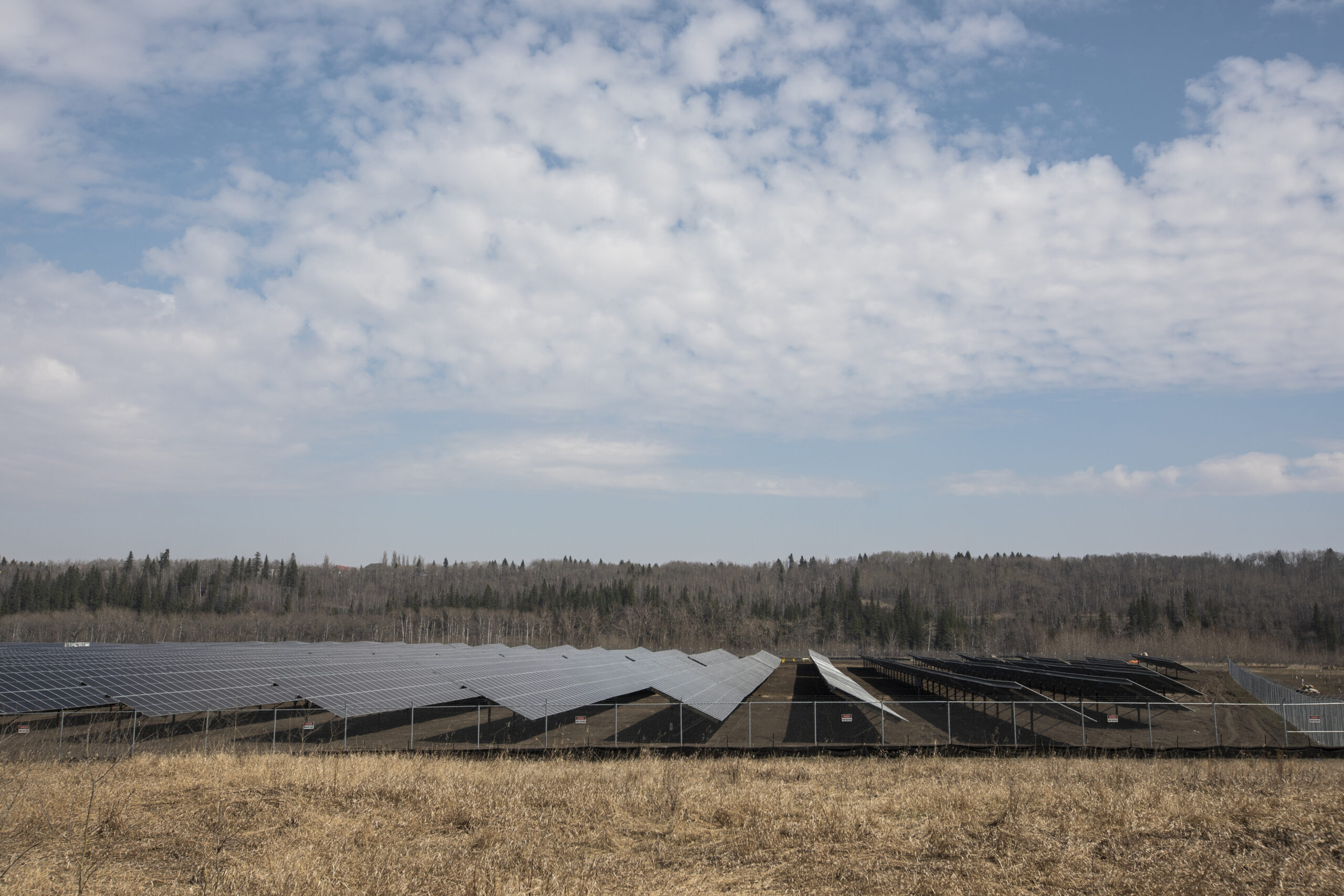
Those figures only account for corporate power purchase agreements and don’t reflect the full scale of investment in renewables in the province. Business Renewables Centre-Canada estimates those corporate agreements are responsible for approximately 34 per cent of installed capacity since 2019.
There will also be more competition in Canada soon, with Ontario, Saskatchewan and Nova Scotia preparing their own forms of corporate power purchase agreements.
According to Richard Goldberger, a spokesperson for the Alberta Utilities Commission, next steps will depend on direction from the government following the commission’s final report on March 29.
“Following its review of the report, the Alberta government may decide to amend the laws that apply to the construction and operation of power plants and those laws could apply to these projects,” he wrote in an emailed response to The Narwhal. “The [Alberta Utilities Commission] will advise all applicants of what next steps, if any, will be required to complete the [Alberta Utilities Commission’s] consideration of their applications.”
It’s not known if the changes reported on Wednesday will require government intervention before the commission can institute the new rules.
Depending on the extent of the changes, the commission could simply update its existing rules, or it would have to wait for the government to enact more substantive changes.
Get the inside scoop on The Narwhal’s environment and climate reporting by signing up for our free newsletter. Angello Johnson’s shoulders burn, and his arms...
Continue reading
First Nations are leading efforts to make sure lake sturgeon can find a home in...

We’re excited to share that an investigation by The Narwhal is a finalist for the...

A new documentary, Nechako: It Will Be a Big River Again, dives into how two...
